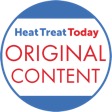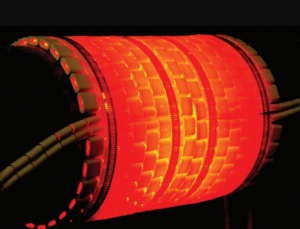
President
Heat Treatment Solutions
 Is new technology always an advantage? Do companies need to update everything or a few things? The rapid pace of technology upgrades is dizzying, and many heat treaters can find themselves unsure of whether to embrace it or refuse it.
Is new technology always an advantage? Do companies need to update everything or a few things? The rapid pace of technology upgrades is dizzying, and many heat treaters can find themselves unsure of whether to embrace it or refuse it.
In this Heat Treat Today Original Content feature, Gerry McWeeney of Heat Treatment Solutions gives his take on the pros and cons of remote monitoring in heat treatment.
Special thanks to Gerry McWeeney, heat treatment consultant and president of Heat Treatment Solutions, for permission to run this article.
THE PROS:
- SAFETY – This cannot be reiterated enough. By reducing numbers of labor in operating units, remote capabilities reduce the risk for end-user and vendors.
- COST REDUCTION – Reduced labor provides a better commercial proposition to end-users on the manpower to equipment discounted rate scenario.
- REMOTE START and STOP
- Clients can benefit from early switch on to assist getting weld preheat to temperature. While not ideal for every situation, e.g. inside refineries where conditions can change and the need for the buddy system negates commercial benefit, but, in certain situations can assist welder productivity, which helps cost and schedule.
- This reduces the risk in emergency situations. The equipment can be remotely isolated without putting people into the units to do this task.
- REDUCED LABOR - At the site, this can have commercial benefits to the customer. It can also have an adverse effect when scope creep or changes to the schedule occur and there are insufficient resources.
- LIMITED FIELD EXPERIENCE - Having control and monitoring operators with limited field experience is a risk as they, at times, can be unable to assist adequately when heat treatment or site conditions change.
- RULES & REGS - Differing employment rules and regulations across borders and states can have an adverse effect on project harmony between operators and field personnel.
- TOO BUSY – Some operators can be charged with monitoring many heat treatments across various different recording devices and projects, some more complex than others. This can cause delays in communications to field when operators have too much on their hands and conditions change. This can be especially true during TAR / OUTAGE season.
The above lists are not complete--there are other softer pros and cons depending on each company’s technology.
Technology alone will not guarantee the heat treatment, that can only be done by correct set up of thermocouples and heating elements in accordance with code requirements and/or engineered drawings that meet code criteria. Technology is here to stay, and advancements in it, when implemented properly, will help vendors and users alike.
“My preference is for control and monitoring at site using remote capabilities with access to view by the client and heat treatment personnel at site”






